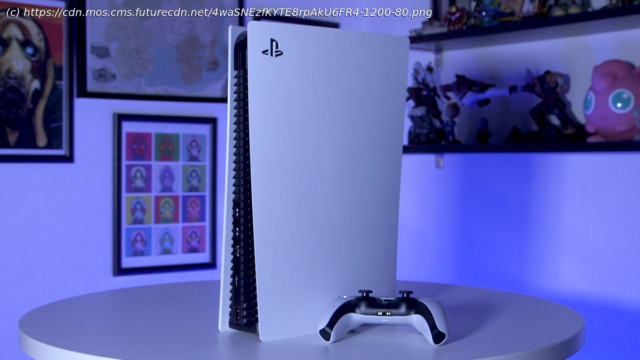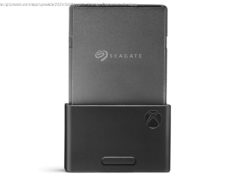The PS5 makes a great first impression and is the next-gen console to buy right now.
We were hoping for great things from the PS5, and Sony’s next-gen console certainly delivers where it matters most: the games. It manages to create a genuine sense of excitement about what’s to come, too, with some innovative features and a fresh new look to the UI. Sony has re-imagined the key parts of the user experience – from a simpler setup and well-thought-out user interface. It also comes with a revolutionary controller, and there’s added bonuses for PS Plus members to enjoy straight away. The end result is a console that we can’t help but be impressed with, and it’s helped that the PlayStation 5 has had a compelling lineup of games to play on day one, many of which are exclusive to Sony’s new machine. It’s finally out – you can visit our PS5 restock tracker in the US, and also buy PS5 UK consoles too. We’re also rounding up all the future PS5 deals and bundles you can expect so you don’t miss a great deal. We’d love to have seen more first-party games at launch (there were only four if you include pack-in game Astro’s Playroom) – and it would have been nice to see further support for previous generations of PlayStation titles, not just PS4 games – but the PlayStation 5 feels like a solid investment nevertheless, and we’re confident that the PS5 experience will only improve with age. The library of compelling titles has certainly grown since the PlayStation 5’s release, with Returnal the latest PS5 exclusive that takes full advantage of the console’s feature set. Ratchet and Clank: Rift Apart is also just around the corner, too, and it looks like it will deliver a spectacular experience for players, at least from a visual standpoint. One area where the PS5 has been slow on the uptake, though, is support for 120Hz TVs with HDMI 2.1. There are only a handful of games that actually let you tap into the silky-smooth frame rates of 120fps, so there isn’t really any point in rushing out to buy a capable display just yet. That doesn’t mean you won’t feel the benefits of the PS5’s substantial horsepower, however. You can still enjoy unbelievably fast load times, significantly better performance and a greater level of visual fidelity in new and older games alike. The PS5 caters to people who are ready to jump into the next generation of video games, but also PS4 owners who won’t want to leave their collection of games behind. It’s a console that so seamlessly bridges the gap between the last generation and the next, that you probably won’t need to boot up your PS4 ever again. From big upgrades like the super-fast NVMe SSD and powerful GPU that enable higher frame rates and ray tracing, to subtle touches like the built-in microphone on the controller that can serve as a quick stand-in for a headset, the PS5 feels like it was built for ease of use as well as pure power. The PS5 Digital Edition is exactly the same as the standard PS5, but removes the 4K Blu-Ray drive to offer a cheaper price point at $399 / £359 / AU$599.95 and a more symmetrical look. We’ve pitted the two PS5 consoles against each other in this PS5 vs PS5 Digital Edition comparison, so you can determine which one is right for you. Whichever PS5 model you choose, though, we can wholeheartedly recommend the console as a welcome upgrade over the PS4, and an exciting portal to next-gen gameplay. Watch our PS5 video review below: The PS5 released in North America, Australia, Japan, South Korea and New Zealand on November 12,2020, which was just two days after the release of Microsoft’s next-gen consoles, the Xbox Series X and Xbox Series S. For the rest of the world, the console became available one week later on November 19. In terms of the PS5’s price, it costs $499.99 / £449.99 / AU$749.95 for the standard version of the console with a 4K Blu-ray disc drive. However, if that’s more than you want to spend, there’s also the PS5 Digital Edition, which is exactly the same apart from it removes the disc drive entirely. It costs $399.99 / £359.99 / AU$599.95, which is a saving of $100 / £90 / AU$150 over the standard model. The PS5 is more expensive than the launch price of the PS4 and PS4 Pro, which both came in at $399.99, but they arrived seven and four years ago respectively now, and you’re getting a generational leap in hardware here for $100 more. The PS5 is still expensive, don’t get us wrong, but the jump in price does feel warranted for what you’re getting. Sony isn’t the only console maker with new hardware on the block, though – you also have to consider the Xbox Series X and Xbox Series S, who are the closest competitor to Sony’s PlayStation 5. Priced at $499 / £449 / $AU749 and $299 /£249 / $AU499 respectively, we’ve delivered our verdict on both the Xbox Series X and Xbox Series S, so we won’t spend much time talking about them here. But if you’re interested in how the two consoles compare, be sure to check out our PS5 vs Xbox Series X breakdown for more details. If gaming consoles had weight classes, the PS5 would be in the heavyweight division. We measured it to be around 39 x 10.4 x 26cm (H x W x D) – though the curved surfaces make getting an exact measurement difficult. The PS5 isn’t light, either. It weighs in at 4.5kg, giving it a noticeable heft when you pick it up. With those measurements in mind, it’s easy to see how the PlayStation 5 is the largest console Sony has ever made, and it teeters on the brink of being simply too big for a device that’s supposed to sit under your TV. Many will have to rethink their current setup or upgrade their entertainment centers entirely to accommodate Sony’s new machine, and that’s a problem that no one should have to worry about when picking up a new console. As for the colors and shape of the console, well, they can be kind of polarizing, too. Some of us on the team absolutely love the PS5 design, while some of us hate it. There’s no denying, however, that its gargantuan size and two-tone color scheme demands attention in any home. One element that’s a delightful touch, and universally liked by the TechRadar team, is the system’s subtle lighting effect, which creates a soothing hue when the console is in operation or rest mode. The light strip adds to the PS5’s space-age look and feel, and represents a nice touch of continuity from the PS4. Much like the PlayStation 4, when the console is in rest mode the light turns orange, and when the PS5 is turned on it changes from blue to white. We’re a bit bemused by Sony’s choice to put glossy plastic down the center spine of the console, though, particularly as that’s where the front USB ports are located. After over six months of use, we can confirm that the plastic can become scratched over time, even though we were extremely careful when plugging in any devices into the front of the console. We were worried that this might be the case when we first reviewed the PS5, and we’re kind of surprised that Sony didn’t contemplate this happening during the console’s development. The glossy finish is also a big dust and fingerprint magnet, which makes the choice all the more bewildering. Due to its curves and tall stature, it’s not just a case of placing the console down and playing once you pull the PS5 out the box – you’ll need to wrap your head around the PS5’s attachable stand first, which isn’t exactly the most user-friendly experience. The console can’t be placed horizontally without the PS5’s stand, and you risk impeding airflow if you don’t use it when the PS5 is standing vertically. It’s an extra step that, while necessary, will hopefully be omitted when the console’s inevitable ‘slim’ version arrives in a couple of years as it’s a bit of a faff. The stand, while functional, feels slightly cheap in the hand too. It has a small compartment to hold one lone screw (don’t lose this, as you’ll need it when placing the console vertically) and at first glance, it doesn’t look like the setup will actually work when laying the console flat. To its credit, though, it does the job in a no-thrills fashion – however, we found the stand slipped off the small lip that it clamps onto multiple times when we shifted our unit into position. In terms of ports, the front of the PlayStation 5 has a USB-A and USB-C port, while the back sports two USB-A ports, a HDMI 2.1 port, an Ethernet port and a power port. There are no proprietary ports on the console, which is always a bonus if you need to replace the odd cable. When it comes to specs, the PS5 is a technically impressive piece of hardware. There’s the new custom RDNA 2 GPU that can push 4K resolution at 120 frames per second, and the octa-core AMD Zen 2-based CPU with a 3.5GHz clock speed. Throw in 16GB of GDDR6 memory and a 825GB NVMe SSD, and this is a machine with some seriously impressive specs. The PS5 is also capable of outputting 8K resolution, however, we’ll need to wait for a firmware update from Sony before it’s able to do so. In fact, the only real issue we have with the PlayStation 5’s spec sheet is the amount of storage available. It’s only using an 825GB SSD instead of, say, a 1TB or 2TB SSD. That decision was clearly made to cut down on the cost of the console, but it means that you can run out of storage quickly if you’re not being judicious about which games you keep installed. The console comes with 667.2GB of usable storage, which we found held around 16 games: two PS5 titles, which were Astro’s Playroom and Marvel’s Spider-Man: Miles Morales, and various PS4 games like God of War and Detroit: Beyond Human. The available space actually went a bit further than we thought, although your mileage will obviously vary depending on the size of the games you have installed. It is possible to upgrade the internal storage with a PlayStation-certified NVMe SSD, but the issue here is this option has been locked by Sony at launch. When, down the line, Sony finally unlocks this expansion port you’ll need to pop off the PS5’s plastic faceplates to reveal the empty SSD bay, and will need a screwdriver to secure your new M.2 drive in place. It isn’t the most intuitive of methods, and feels like a slight oversight on Sony’s part – but hopefully it’s only something you’ll need to do once. It’s also handy that you will be adding storage onto the existing 667GB, instead of starting from scratch. The good news is that you’re also able to use external hard drives and SSDs by plugging them into the USB port. You won’t experience the same lightning-fast load times that you get from the built-in SSD and optional (not to mention locked) SSD bay. But if you use an external SSD, you’ll still see a massive boost to load time performance over a regular mechanical hard drive. We plugged in an external SSD into one of the PS5’s USB ports and the process of getting things set up was effortless. The console detected that an external drive had been connected, and once it was formatted, we were able to store and transfer PS4 games to it. After a recent PS5 system update, you can now also store PS5 games or save data to external storage, however, you’ll need to transfer games back onto the internal drive if you wish to play them. If you do run out of space, or are confused by how storage works on the PS5, check out our PS5 storage explainer.






